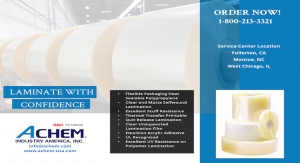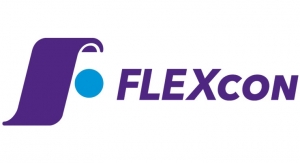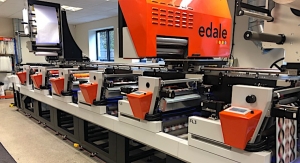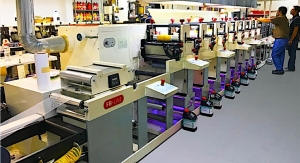Mark Lusky09.10.21
Product labels need to be all they can be. Among other vital characteristics, they must withstand the elements, ranging from sunlight and heat to water and humidity. Frequent handling is another consideration.
A discoloring, faded label speaks ill of the product inside and conveys to the consumer that perhaps the product itself is not of the best quality, either.
All of this speaks to customer service – or the lack of it. In addition to unsightly appearance, degraded labels can be hard or impossible to read. Consumers who want to know what’s in their products can get very cranky when unable to access that information easily.
How can a product manufacturer best ensure that labels stand the test of time, regardless of impacts that can wear them down if not properly printed and protected?
1. Go professional. While DIY, home-printed label options have proliferated, the best bet is to hire a high-quality, professional custom label printer. In many cases, it’s akin to the difference between self-generated graphic design and work done by an experienced professional designer. Unless the person doing the design is skilled, trained and educated in graphic arts, likely outcomes will be something less than professional.
Similarly, today’s professional label printers know the ins and outs of how to print, adhere and protect labels that look good, maintain their integrity, and convey quality in every respect. And, in many cases, price points are surprisingly competitive to DIY, even in
small quantities.
While some of the basics can be handled with home printing, product manufacturers looking to project high-end branding – and show a commitment to top-notch customer service – are generally advised to go pro.
2. Pair up graphic design and printing. The right graphic designer and printing company can provide key information about how best to print labels that will look good and stay pristine. In some cases, the graphic design and printing companies are separate. In others, graphic design talent is available through the printer. No matter who’s involved and how, make sure the two sync up on all elements of label design and printing to get the best, most durable product labels. These elements can include the label material and finish (e.g., coated versus uncoated), type and color of ink, special effects, type of finish and how applied, and adhesive consideration.
It can be a tricky balancing act developing the most impactful, creative and colorful label that will stand up no matter what. For example, what works to create the most durable, waterproof label may require altering design elements.
And then there are such considerations as the type of light under which the label will be viewed, the contents – and colors – of the container itself, and how everything looks as a finished product. What seems like a beautifully-designed, transparent label with many high-torque bells and whistles can quickly go south when the contents end up clashing with or minimizing the readability of the label itself.
3. Make sure all durability bases are covered. Professional, polished labels don’t happen by themselves. A variety of criteria need to be considered. At the front end (not as an afterthought as sometimes happens), consult with the design/printing team to find the best path forward.
Among questions that need to be answered are: What will the labels be exposed to? This one can be very tricky. For example, a product manufacturer marketing nationally must consider all climate types, temperatures and conditions. What may play well in dry, moderate climates can prove troublesome in hot, humid areas.
Will the labels live primarily inside or outside, or both? Again, think about all possible scenarios and plan the best way to meet them all. If inside, where? Body care products may be stored in the bathroom, which by nature will be more humid and may be subjected to water frequently. If outside, where? In a sheltered environment or out in the elements? Address such conditions as sun exposure, precipitation, heat, cold and wind as part of this equation.
How long will the product likely last? A bottle of wine or craft beer may have a much shorter shelf life than a jar of hot sauce used sparingly. Will the label be subjected to dirt and debris? If so, a white or light-colored label and/or ink may not be the best choice. Perhaps a darker color or mottled label material is a good idea.
Labels can end up being a many-splendored thing or a major problem, depending on the care product manufacturers take up front to create the best possible outcome. Decisions made based only on finding the most expedient solutions often end up being the wrong ones.
Mark Lusky is a marketing communications professional who has worked with Lightning Labels, an all-digital custom label printer in Denver, CO, USA, since 2008. Find Lightning Labels on Facebook for special offers and label printing news.
A discoloring, faded label speaks ill of the product inside and conveys to the consumer that perhaps the product itself is not of the best quality, either.
All of this speaks to customer service – or the lack of it. In addition to unsightly appearance, degraded labels can be hard or impossible to read. Consumers who want to know what’s in their products can get very cranky when unable to access that information easily.
How can a product manufacturer best ensure that labels stand the test of time, regardless of impacts that can wear them down if not properly printed and protected?
1. Go professional. While DIY, home-printed label options have proliferated, the best bet is to hire a high-quality, professional custom label printer. In many cases, it’s akin to the difference between self-generated graphic design and work done by an experienced professional designer. Unless the person doing the design is skilled, trained and educated in graphic arts, likely outcomes will be something less than professional.
Similarly, today’s professional label printers know the ins and outs of how to print, adhere and protect labels that look good, maintain their integrity, and convey quality in every respect. And, in many cases, price points are surprisingly competitive to DIY, even in
small quantities.
While some of the basics can be handled with home printing, product manufacturers looking to project high-end branding – and show a commitment to top-notch customer service – are generally advised to go pro.
2. Pair up graphic design and printing. The right graphic designer and printing company can provide key information about how best to print labels that will look good and stay pristine. In some cases, the graphic design and printing companies are separate. In others, graphic design talent is available through the printer. No matter who’s involved and how, make sure the two sync up on all elements of label design and printing to get the best, most durable product labels. These elements can include the label material and finish (e.g., coated versus uncoated), type and color of ink, special effects, type of finish and how applied, and adhesive consideration.
It can be a tricky balancing act developing the most impactful, creative and colorful label that will stand up no matter what. For example, what works to create the most durable, waterproof label may require altering design elements.
And then there are such considerations as the type of light under which the label will be viewed, the contents – and colors – of the container itself, and how everything looks as a finished product. What seems like a beautifully-designed, transparent label with many high-torque bells and whistles can quickly go south when the contents end up clashing with or minimizing the readability of the label itself.
3. Make sure all durability bases are covered. Professional, polished labels don’t happen by themselves. A variety of criteria need to be considered. At the front end (not as an afterthought as sometimes happens), consult with the design/printing team to find the best path forward.
Among questions that need to be answered are: What will the labels be exposed to? This one can be very tricky. For example, a product manufacturer marketing nationally must consider all climate types, temperatures and conditions. What may play well in dry, moderate climates can prove troublesome in hot, humid areas.
Will the labels live primarily inside or outside, or both? Again, think about all possible scenarios and plan the best way to meet them all. If inside, where? Body care products may be stored in the bathroom, which by nature will be more humid and may be subjected to water frequently. If outside, where? In a sheltered environment or out in the elements? Address such conditions as sun exposure, precipitation, heat, cold and wind as part of this equation.
How long will the product likely last? A bottle of wine or craft beer may have a much shorter shelf life than a jar of hot sauce used sparingly. Will the label be subjected to dirt and debris? If so, a white or light-colored label and/or ink may not be the best choice. Perhaps a darker color or mottled label material is a good idea.
Labels can end up being a many-splendored thing or a major problem, depending on the care product manufacturers take up front to create the best possible outcome. Decisions made based only on finding the most expedient solutions often end up being the wrong ones.
Mark Lusky is a marketing communications professional who has worked with Lightning Labels, an all-digital custom label printer in Denver, CO, USA, since 2008. Find Lightning Labels on Facebook for special offers and label printing news.
























